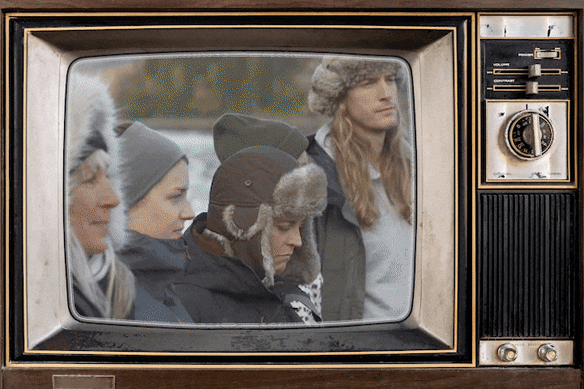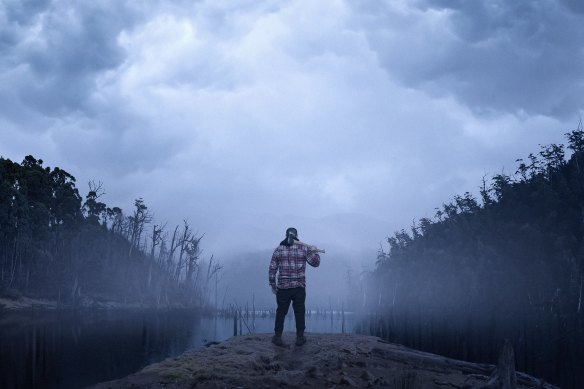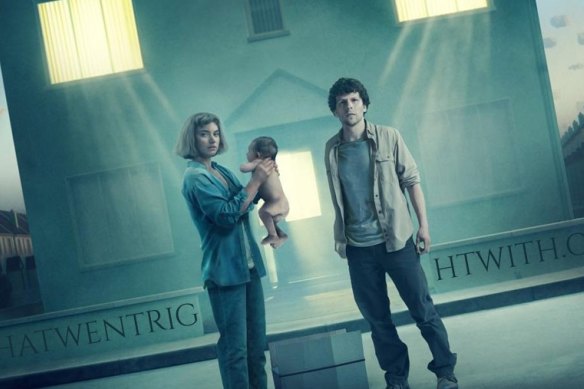This was published 6 months ago
I watched nothing but SBS On Demand for a week. Here’s what I learnt
By Nell Geraets
As Australians battle the cost-of-living crisis, spending more on rent, groceries and energy bills, it’s becoming harder to justify shelling out multiple monthly payments purely because you want to watch both The Marvelous Mrs. Maisel (Amazon Prime) and Ripley (Netflix).
When you add the paralysis that can kick in when deciding what to watch from the plethora of options available, less is more is starting to sound like a very agreeable mantra.

What is it like watching only SBS On Demand for a week? Turns out it isn’t that hard.Credit: Margaret Gordon
So what happens if you cut out all the paid-for streaming providers … and almost everything else? What if you only gave yourself access to one streaming platform, say SBS On Demand, for a week.
Would it be gruellingly limited, or an antidote to my worsening decision fatigue and dwindling bank balance? Let’s find out.
What does it offer?
It turns out the SBS On Demand app has a fairly extensive collection of TV series and movies, ranging from travel and current events shows to Hollywood blockbusters.
Though it offers licensed material, including horrors, classics, dramas, documentaries and kids entertainment, the app often highlights its original content. This includes massively popular series such as Alone Australia and more niche offerings such as the South Korean horror series Night Bloomers.

Alone Australia, an SBS Original, is one of the service’s most popular productions.Credit: SBS
First impressions
I was excited to get stuck into the SBS content, as it was relatively unexplored territory for me. On first glance the various collections curated by the service put a lot of content in easily accessible buckets. There are collections for Quentin Tarantino films, Shakespeare adaptations, queer content and shows based on books. It was incredibly easy to browse not only by genre, but by the specific mood I was in at the time.
The single best part of the experience, however, was how SBS On Demand broke me out of my comfort zone. Though there wasn’t as much content available as on other streamers, I found myself searching categories I rarely consider on Binge or Stan. For example, I tend to stick to English (my mother tongue) productions on weeknights so that I don’t need to focus on subtitles, but nine of the 27 things I watched over the week on SBS (including both films and TV episodes) were in a language other than English (Alone Sweden was in Swedish and The Host was Korean).
In fact, SBS is generally brilliant for international and Indigenous content. Many of its shows provide subtitles in Simplified Chinese, Traditional Chinese, Arabic, Vietnamese and Korean. Its Korean collection, which includes Bong Joon-ho’s The Host and Parasite, was a particular favourite of mine since they know how to do my favourite genre, horror, best.
What I didn’t love
Firstly, ads. Some people may not mind, but I’m the type who will pay to avoid them (and I do on Netflix and Binge). It was particularly tough when I kept accidentally navigating away from the show I was watching, forcing myself and my partner to rewatch the entire set of ads. By day three, my partner went so far as to say it was enough to “ruin his day”. Melodramatic? Yes. Could I relate? Also yes.
Secondly, options are limited. On one hand, this encouraged speedier decisions. On another, it left me craving what I couldn’t have. At one point, I was itching to watch The Matrix, but it was only on Stan. It kind of felt like camping – you still have somewhere to sleep, but it will never compare to having a full house of luxuries.
Several of my colleagues were also raving about Netflix’s Ripley and Baby Reindeer, giving me intense FOMO. Watching TV is largely a social activity – we often enjoy discussing it as much as watching it – so the inability to participate can feel rather isolating (especially when your entire job revolves around visual media).

It was a challenge convincing my guests to choose something from SBS On Demand. We landed on Vivarium, but they were thoroughly unimpressed.
I’d argue streaming subscriptions have also become a kind of status symbol. I had friends over on Friday and Saturday night, and it was weirdly difficult explaining to them that we could only choose movies from SBS. “You don’t have Netflix?” one asked incredulously, as if it were as common a staple as toilet paper. It didn’t help that we ended up watching Vivarium on Saturday, a horror movie so strange that my guests didn’t even want to finish it.
Would I recommend it?
Ultimately, yes. Deciding what to watch didn’t feel as arduous a task, and I finally had the freedom to catch up on shows had I missed in the past, including the fifth season of Fargo and comedy-drama Why Women Kill. When you’re subscribed to five streaming services, new material is churned out at a rate that’s impossible to keep up with. When you’re subscribed to one, you can actually finish series (even if only one of five seasons is available).
That being said, I believe SBS On Demand is best when paired with one or two other services. Midway through the experiment, I didn’t look forward to an evening of TV as much purely because I knew the pickings were slim. There’s only so much Alone you can watch before the sight of raw fish makes you reach for the remote. Or perhaps it just takes longer than a week to wean myself off what has surely become a streaming service addiction.
What I watched on SBS On Demand
- Wednesday, April 17: Fargo (season 5, two episodes); Death on the Nile (1978)
- Thursday, April 18: Alone Sweden (season 1, three episodes)
- Friday, April 19: The Host (2006)
- Saturday, April 20: Fargo (season 5, one episode); Vivarium (2019)
- Sunday, April 21: Fargo (season 5, one episode); Why Women Kill (season 1, three episodes); Alone Sweden (season 1, three episodes)
- Monday, April 22: Why Women Kill (season 1, three episodes); Alone Sweden (season 1, two episodes)
- Tuesday, April 23: Why Women Kill (season 1, two episodes); Death Proof (2007)
- Wednesday, April 24: Alone Australia (season 2, two episodes); Why Women Kill (season 1, one episode)
Find out the next TV, streaming series and movies to add to your must-sees. Get The Watchlist delivered every Thursday.